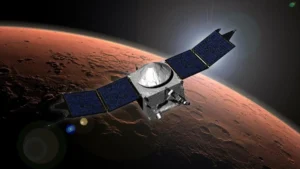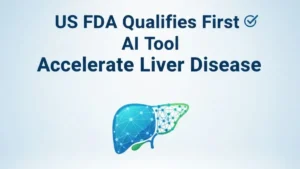Skyroot Aerospace, the leading space-tech company, has successfully test-fired the Stage-2 of Vikram-1 space launch vehicle, called Kalam-250, at the propulsion testbed of the Indian Space Research Organisation (ISRO), at its Satish Dhawan Space Centre (SDSC) in Sriharikota, Andhra Pradesh on Wednesday.
Technical Specifications and Achievements
The tested component, designated as Kalam-250, demonstrated impressive performance metrics:
- Test duration: 85 seconds
- Peak sea-level thrust: 186 kilonewtons (kN)
- Projected vacuum thrust: 235kN during actual flight
Advanced Materials and Technology
The Kalam-250 showcases cutting-edge technology:
- Constructed with high-strength carbon composite
- Utilizes solid fuel propulsion
- Features a high-performance Ethylene-Propylene-Diene terpolymers (EPDM) Thermal Protection System
Critical Design Elements
The Stage-2 engine incorporates several crucial components:
- Carbon ablative flex nozzle
- High-precision electro-mechanical actuators for thrust vector control
- VSSC-supplied proprietary head-mounted safe arm (HMSA) for enhanced operational safety
Significance for India’s Space Sector
Private Sector Milestones
This test represents multiple achievements:
- Largest propulsion system designed and manufactured by India’s private sector
- First carbon-composite-built motor tested at an ISRO facility
- Follows Skyroot’s successful launch of Vikram-S, India’s first private suborbital rocket, in November 2022
Collaborative Efforts
The project highlights successful collaboration between:
- Skyroot Aerospace
- Indian Space Research Organisation (ISRO)
- Solar Industries (propellant processing in Nagpur)
- IN-SPACe (regulatory body)
Future Prospects
Roadmap to Orbital Launch
Skyroot’s leadership has outlined their vision:
- CEO Pawan Chandana emphasized this test as a crucial step toward orbital launch capability
- COO Naga Bharath Daka confirmed the successful validation of the flex nozzle control system
- The company aims for the maiden orbital launch of Vikram-1 in 2024
Technical Context
Understanding Launch Vehicle Stages
Space launch vehicles operate in multiple stages:
- Main stage initiates the launch
- Stage-2 is crucial for transition from atmosphere to outer space
- Kalam-100 (Stage-3) was successfully tested in June 2021
This achievement by Skyroot Aerospace not only demonstrates the growing capabilities of India’s private space sector but also highlights the successful collaboration between private enterprise and government space agencies, setting the stage for future advancements in India’s space program.




 NASA Loses Contact with MAVEN Spacecraft...
NASA Loses Contact with MAVEN Spacecraft...
 US FDA Qualifies First AI Tool to Accele...
US FDA Qualifies First AI Tool to Accele...
 11th India International Science Festiva...
11th India International Science Festiva...







